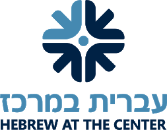Fourth Grade Study of Biblical Characters Incorporates Biblical Exegesis, Character Analysis, Poetry and Mixed Media Art
January 25, 2017 by
Fourth Graders delved into their study of Biblical characters using biblical exegesis, character analysis, mixed media art, and poetry. At JPDS-NC, Third and Fourth graders study Torah with a focus on the Avot (Patriarchs) and Imahot (Matriarchs) as the founders of the Jewish people. Fourth Graders spent the first semester focusing on the characters of Rachel, Leah, and Yaakov and pondering: Who are they? What are their values? What are their key attributes? And why are those attributes important for the founders of a nation? Throughout each phase of our exploration, students engaged deeply and thoroughly in textual study and character analysis.
Our unit encompassed the story of Yaakov and his family fleeing from Lavan’s home and Rachel rebelling, found in Bereshit (Genesis) chapter 31. The students began their scholarly review by engaging with the p’shat (literal meaning) of the Torah, in a process they learned in third grade and perfected this year. To garner understanding, the students first identified trope (cantillation) marks as well as the prefixes and suffixes of the words. Next, they translated the individual words, and finally put it all together in a way that makes sense. In this particular set of verses, the students read about how Yaakov, Leah, and Rachel, along with the rest of their family, leave Lavan’s home, and as they are leaving, Rachel secretly steals her father’s idols.
Once the students mastered the literal meaning of the verses, it was time to grapple with the d’rash (biblical exegesis). D’rash provides the students with a deeper look at the events and characters in the Torah. The students were presented with two different explanations as to why Rachel stole the idols, from the commentators Rashi [11th-century France] and Rabbeinu Chananel [11th-century Tunisia]. The students teased out the complexities of the differences between these two opinions, reflected on Rachel’s risk-taking, compared her risk-taking to that of other historical figures, and compared and contrasted Rachel stealing the idols to a midrash (extra-textual story) in which Avraham smashed his father’s idols.
At that point, the students delved deeply into what both the p’shat and d’rash teach us about who a particular character might have been: what made them tick, what characteristics they possessed, and what emotions might have played into their decisions. To do that, the students completed a character representation outline, where they documented all that they know about the character they are studying. The students included quotes from the Biblical text (e.g., “Rachel stole the idols from her father”) and phrases from the d’rash (e.g., “Rashi: ‘Rachel stole the idols to keep her father from worshipping idols’”). They then identified both a characteristic and a visual symbol to describe the character that go along with the phrases they have recorded, and produced a first draft of ‘their character.’ Incorporating both p’shat and d’rash is “helpful for us to learn about the different levels of Torah, and the d’rash helps us dive deeper,” according to Shalvah.
Next, the students created their symbolic and artistic representation of the character with a variety of media. The students worked with mixed media, ranging from buttons to feathers to pom-poms, and used gel pens, colored pencils and fabrics, to communicate the richness of the Biblical characters and their experiences through art. Utilizing symbolism was interesting, according to Nava, “because I saw how you might overlook some symbols or how regular everyday things can relate to someone in the Torah.”
The Fourth Graders then composed ‘I Am’ Poems, written from the perspective of the characters as the events in the Torah unfold, to drive home their sense of who the characters may have been. “The ‘I am poems’ really helped me think deeply about the characters because I imagine I am them,” said Michal. Shalvah composed: “I am Rachel, thief of her own father’s idols… I wonder if they will be discovered… I hear my father coming… I see the idols, then quickly hide them… I want Lavan to stop believing in them… I am Rachel.”
A key point in the process occurred after the students completed their character analysis and artistic rendering, and began to compare their biblical figure to that same character at other points in their life. For example, the students looked at Rachel over the course of her life: marrying Yaakov, having children, and leaving her father’s home with his idols. Mattan was surprised by “how the characters really changed through the Torah.” Hadar elaborated, “First Rachel was happy, then angry, then thieving… I actually liked Rachel most in the third stage.” Gideon noted, “It’s weird seeing how my points of view change as I learn more about them.”
Students discussed what surprised them about the Biblical characters, the process of creation, or about themselves as they navigated through this multi-step cycle of learning about the Patriarchs and Matriarchs. Batya reflected that the students learned about Biblical figures “in a way that came to life more than just by writing it.” Yedidya was surprised by “how deep we go into the characters,” while Azaria highlighted “how different the characters are.” For some students, the process helped them realize a stronger connection to these Biblical figures. Nava shared, “I was surprised by how much I or other people resemble the Avot or Imahot.” According to Gabriel, “what surprised me was that I would understand them in their life.”






